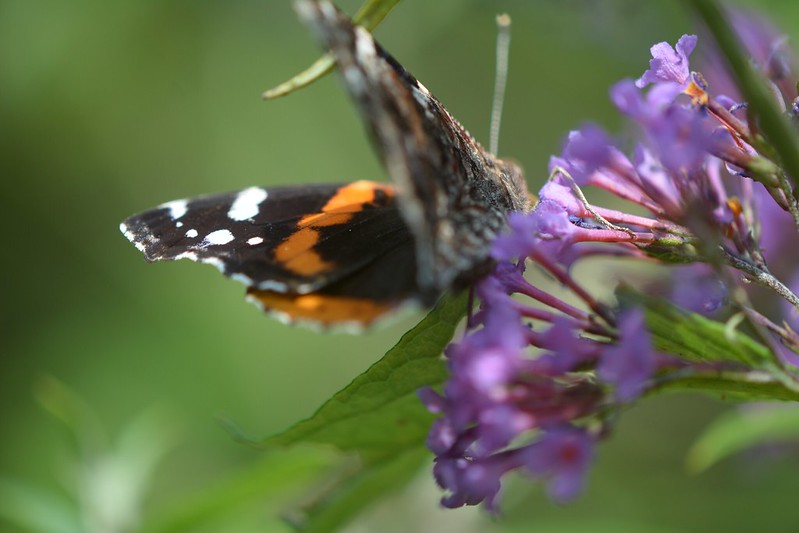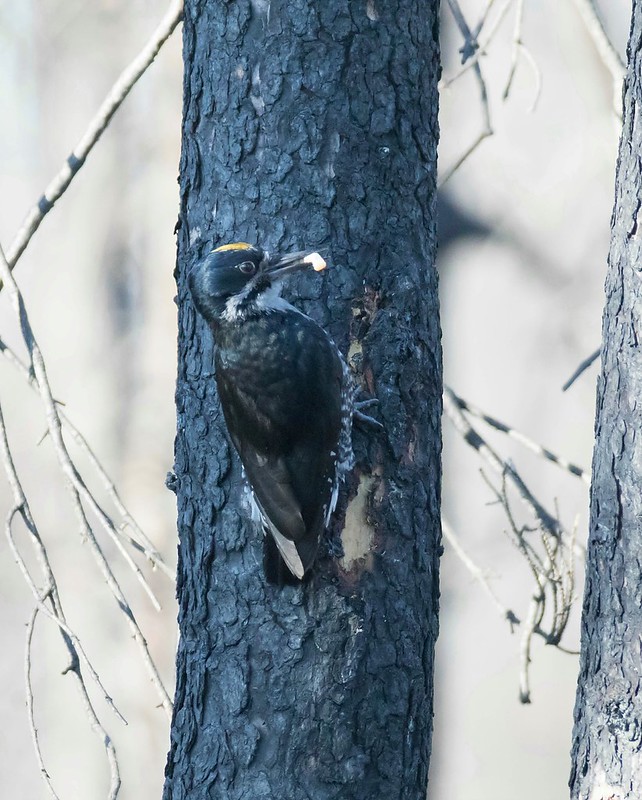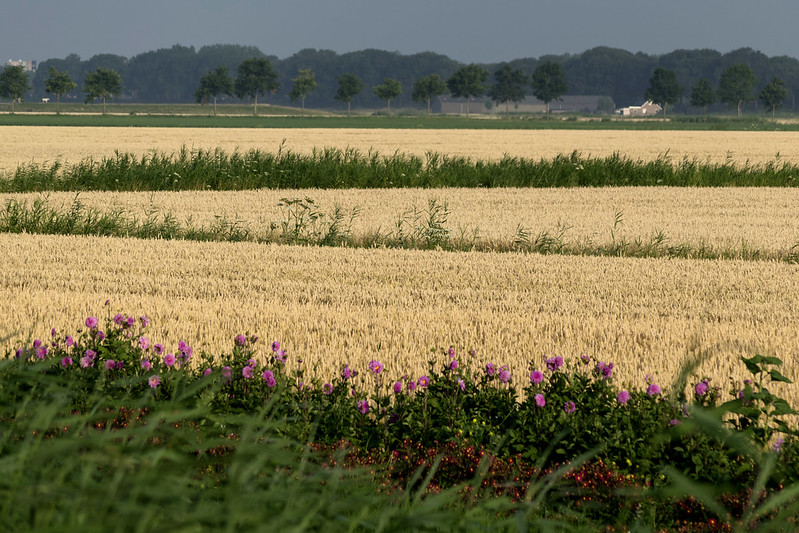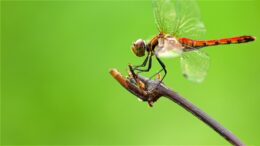Maybe you’ve noticed summer night skies dimmed by the loss of fireflies, or a lack of bug splatter on your windshield. Or perhaps you’ve been urged to plant milkweed to help monarch butterflies recover. Those are just small glimpses at the insect declines happening globally.
In the United States research has documented American bumblebees down 90% since 2000. Moth populations have fallen 33% since 1968; the western population of migratory monarch butterflies has plummeted by 90% in the past 50 years. In Germany researchers measured a 76% reduction in the biomass of flying insects, and research in East Asia showed the summertime number of predator insects had fallen by 20%.
A look at the bigger picture isn’t much better: A 2019 study concluded that we could lose 40% of the world’s insect species to extinction in the next few decades.
This mounting body of scientific evidence prompted a 2018 New York Times story, “The Insect Apocalypse Is Here,” which caused a storm of media attention.
New research since then only adds to the concern. It also hones in on the additional pressure of climate change, which amplifies other threats already facing many insect species.
“We have enough data to know we are in a critical moment because many of the insects we know are declining, and Earth is experiencing transformations that will make it even more inhospitable to insects as we know them,” says Mariana Abarca, an assistant professor of biological sciences at Smith College. She’s the coauthor of a paper published in November in Ecological Monographs called, “Scientists’ Warning on Climate Change and Insects,” which summarizes the effects of gradual global surface temperature increases on insects, as well as the effects of increased extreme events.
“We warn that, if no action is taken to better understand and reduce the action of climate change on insects, we will drastically reduce our ability to build a sustainable future based on healthy, functional ecosystems,” the authors of the study concluded.
That’s bad news not just for insects but for all wildlife — and for us.
Life as we know it relies on insects doing what they do: pollinating plants, including three-quarters of the crops we eat and 80% of wild plants; controlling pests; breaking down organic matter and recycling the nutrients; and being eaten. Insects make up the base of the aquatic and terrestrial food webs. Salmon, birds, people — and countless other animals — would all go hungry without them.
How Bad Is It?
Are concerns of an “apocalypse” justified? The answer may be somewhere between “not sure” and “not yet.”
To be certain, we’d need more information.
“In order to know what proportion of insect populations are declining and how geographically widespread these declines are, we would need long-term monitoring data from multiple locations in the globe,” says Abarca. “Only a subset of insects in a restricted geographic range have been properly monitored, so of those, we know many are experiencing serious declines and that is concerning.”
But signs are strong that we’re headed into dangerous territory.

“If we don’t change what we’re doing, the areas and groups that are declining will spread,” says Carol Boggs, a professor of biological sciences at the University of South Carolina, and another coauthor of the study.
The Threats
Climate change will hurry that process along.
Some of the biggest threats to insects are habitat loss and fragmentation, pollution, invasive species and land-use changes like deforestation, urbanization and industrial agriculture. Climate change adds another compounding layer.
Warming temperatures will force some species to migrate, but that’s a prospect that gets harder as we convert natural areas — and potential climate refugia — into roads, housing developments and chemical-intensive farms.
Most insects are ectothermic, making them unable to control their own body heat and therefore vulnerable to changing temperatures or moisture levels.
When temperatures get too high insects can suffer a range of injuries, including development failures and negative effects on longevity, dispersal and fecundity. “All of which can reduce their resilience in the face of climate change and in the worst-case scenarios lead to population crashes,” the researchers wrote.
Many insects also rely on temperature signals to initiate stages of life, including diapause, a necessary period when development is suspended in winter. More summer heatwaves or warmer winter spells could trigger mistimed biological cues, resulting in “trophic mismatch” where a lack of synchronous resource availability affects organisms’ survival.
“I’ve collaborated with Dr. David Inouye to show that early snowmelt in montane regions can lead to flowering plants starting to grow earlier; those plants’ flower buds can then get aborted due to late spring freezes,” says Boggs. “A lack of flowers leads to reduced egg laying by the Mormon fritillary butterfly, which leads to decreases in population. This phenomenon likely applies to other butterflies as well.”
Extreme Weather
It’s not just long-term warming trends. More climatic extremes can be dangerous for insects, too.
Climatic extremes pose “a short-term threat to insects, with long-term consequences for ecosystems,” the researchers write.
Heat waves can impair reproduction and fertility. Extreme rainfall and floods can dislodge insects from plants, change soil properties, and force those who live underground to come to the surface, increasing the risk of predation.
Drought also threatens insects and the plants they rely on. For example, the study found “a recent mega-drought in western North America had negative and long-lasting effects on montane butterfly communities that were comparable in magnitude to the combined effects of decades of habitat loss and degradation at lower elevations.”

One exception may be wildfires, the aftereffects of which are a boon for wood-boring beetles (and the birds who eat them). Emergent vegetation after a fire can boost the understory and bugs attracted to that new growth — though even for these species, researchers warn, big changes to fire regimes can still be problematic.
But smoke from wildfires can also negatively affect some insects, a recent study found, including blocking antennal receptors in bees and decreasing flying abilities of painted lady butterflies.
Winners and Losers
That’s an important reminder that climate change won’t affect all species the same way — insects included.
Tropical insect species have been found to be at a greater risk than those in temperate areas, who are more adapted to a greater range in temperature. But insects in the coldest places, like areas in front of receding glaciers, also face habitat change.
Some insects could benefit — in some cases the ones we least want to see proliferate. Warming winter temperatures are leading to more forest and crop pests that were previously held in check by cold weather. In Hawai‘i native birds like the ‘akikiki, a kind of honeycreeper, are endangered by the avian malaria spread by invasive mosquitoes that are now increasing their range to higher elevations with warming temperatures.
“Winners tended to be generalist/invasive species, good dispersers, generally colonizing from downstream or downslope, such as grasshoppers,” they write. “Conversely, the losers are often specialist species, adapted to cold habitats, among which some were restricted to isolated glacier-influenced ecosystems.”
Taking Action
Despite a lot of concerning findings, there’s also some good news if we act quickly. “Most insects have short generations and lay hundreds of eggs, so they have a better chance of bouncing back than other imperiled animals, such as rhinos or tigers,” says Abarca. “I’m optimistic about the success of insect conservation programs — we just have to start them.”
Some of that can be small, like “microclimatic refugia.” This includes flower strips, hedgerows, woodlots, and diverse agricultural areas and cover cropping.

Insect needs also vary at different times of the year.
“Overwintering insects need the protection that leaf litter and organic debris provide,” she says. “It’s important to not only provide native flowers for pollen and nectar during the growing season, but also to let caterpillars and other larvae to eat the foliage of trees and to leave the leaves where they fall in autumn, so they host pupae until the following spring.”
People can help this process in their own yards by using a diverse mix of native plants, forgoing pesticides, sowing native wildflowers, limiting mowing and leaving plant debris on the ground.
“I would like to change the image of a neat, tidy yard as something desirable and replace it with the image of a rich, messy, biodiverse yard,” says Abarca.
We also need actions on a much larger scale.
“It’s vitally important that factors such as habitat loss and fragmentation, invasive species, intensive agricultural practices, various forms of pollution, and other stresses are fully integrated into conservation management approaches,” the researchers write. “Only in this way will declines in insects be stabilized or reversed.”
Curbing climate change will be needed to help insects, too. The study highlights a range of actions along those lines, including reducing and eliminating the use of fossil fuels, curbing short-lived pollutants like methane, restoring and permanently protecting ecosystems to safeguard biodiversity and store carbon, embracing a circular economy and growth within ecological limits, and stabilizing human population levels.
“Scientific progress alone is unlikely to result in desirable outcomes and needs to be paired with enabling policies, broad awareness-raising, and stakeholder education,” it reads. “The evidence is clear and the onus is on governing bodies to act now. With species and habitats being lost every day, a refusal or delay to act is not a wise choice.”
There’s also one more way we can all help: Tell stories about insects. “Insects are so different from mammals that we don’t typically connect with them,” says Abarca. “But once people learn more about their ways of life and their ecological importance, they change their minds.”
Previously in The Revelator:
A Surprising Effect of Light Pollution: It Disrupts Aquatic Insects


